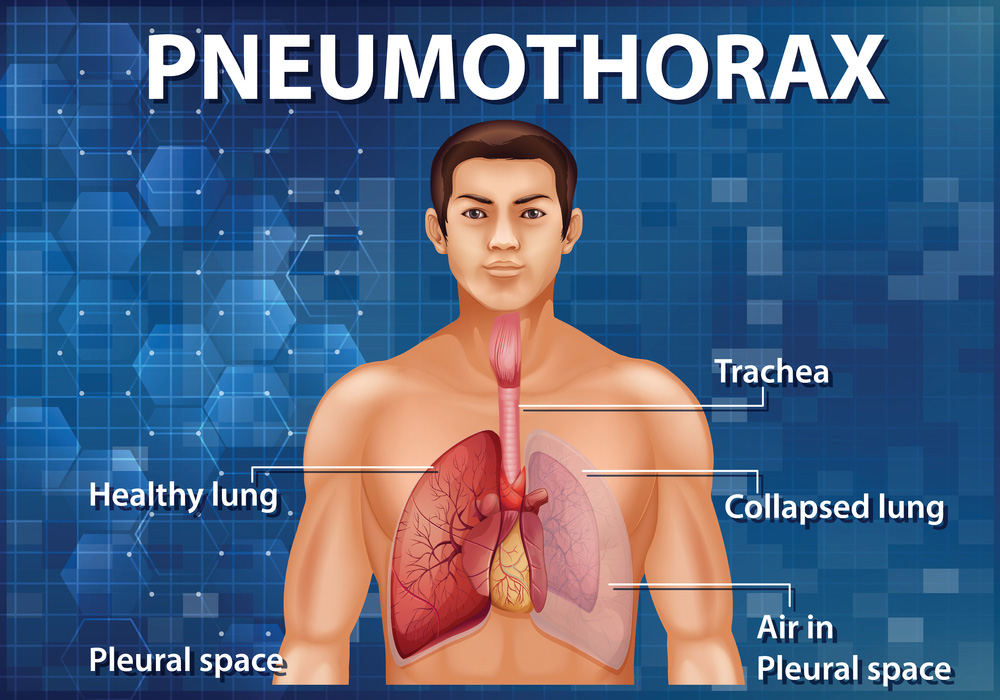
A pneumothorax is when the lung has collapsed due to air entering the space around your lungs (known as the pleural space). Air can enter the pleural space through an opening in your chest wall or in the lung. Air in the pleural space creates an increase in pressure around the lung and causes it to collapse.
A pneumothorax can be severe, depending on how much air is trapped in the pleural space. A small amount of trapped air can usually resolve by itself, provided there are no other complications. Larger amounts of trapped air can be serious and lead to death if medical treatment is not obtained.
What are the signs and symptoms of a pneumothorax?
Symptoms of a traumatic pneumothorax typically occur during the period of trauma or just after. In contrast, symptoms of a spontaneous non-traumatic pneumothorax usually occur when the person is at rest. Sudden, severe chest pain is often the first symptom of a pneumothorax. Other symptoms include:
- Abnormally fast heart rate (known as tachycardia)
- Blue-tinged lips and skin
- Breathlessness on exertion
- Cold sweats
- Constant ache and tightness in the chest
- Difficulty catching your breath
- Sharp pain when breathing in, with fast and shallow breathing.
What are the possible treatments for a pneumothorax?
Treatment for a pneumothorax will depend on your symptoms, medical history and the severity of the pneumothorax. Treatment options can be both surgical and non-surgical and can include:
- Chest drain insertion – can be used to help remove excess air in the pleural space, enabling your lungs to expand fully again
- Observation – is usually appropriate for people who have a primary spontaneous pneumothorax and who don’t have difficulty breathing; ongoing chest X-rays may be recommended to monitor lung function and to ensure all air from the pleural space has disappeared and the lungs can fully expand again, and it is recommended to avoid all contact sport and any activity, like air travel, that could impact on healing the pneumothorax
- Pleurodesis – is a procedure which sticks the lung to the chest cavity; it is often recommended for people who have had previous pneumothorax to help prevent further collections of air in the pleural space, or in people with a chest drain and an ongoing leak of air that has not settled after a few days
- Surgery – there are several types of surgery for pneumothorax:
- Thoracoscopy (also known as video-assisted thoracoscopic surgery or VATS) – is where a small camera is placed in the wall of your chest to help determine the best treatment; possibilities post-surgery include closing up blisters and air leaks, or removing a portion of the lung that has collapsed (called a lobectomy)
- Thoracotomy – where an incision is made in the pleural space to help determine a suitable treatment option.Thoracotomy – where an incision is made in the pleural space to help determine a suitable treatment option.